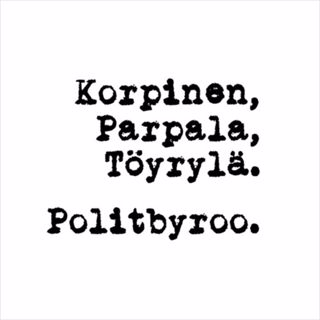
Stacey Plaskett Protected: Is Jeffrey Epstein Accountability Already Dead in Congress? (11/20/25)
Stacey Plaskett was just saved from censure by Republicans — the same Republicans who have spent weeks pounding the podium about protecting children and holding Epstein-connected figures accountable. They backed off not out of principle, but to shield their own colleague Cory Mills, who is facing ethics violations of his own. It was a stunning collapse of supposed moral courage, with lawmakers folding like cheap lawn chairs when it came time to actually act. The GOP proved that all of their righteous fury was nothing more than stage lighting and sound effects. If they won’t even take action against someone they call an enemy, the idea that they would ever go after their own donors or allies is laughable. Every Democrat who voted against censure is just as complicit, exposing the hypocrisy of claiming moral high ground while protecting one of their own. Both parties showed their hand: preserving power matters more than accountability or truth.Stacey Plaskett shouldn’t just have been censured — she should be stripped of committees, cut off from party backing, and pressured to resign. Her actions and alliances are indefensible, and protecting her destroys any credibility either party claims to have in the fight for transparency and justice in the Epstein case. If Democrats want to be taken seriously in demanding full disclosure and real consequences for everyone tied to Epstein’s network, they must abandon the practice of shielding “favorites” and clean their own house first. You cannot scream about Trump while ignoring Plaskett. You cannot claim to defend victims while protecting someone who served as an institutional shield for a predator’s ecosystem. Until both parties stop rolling in the mud, neither can pretend to stand on higher ground. This isn’t going away. Accountability starts now — not when it’s convenient.to contact me:bobbycapucci@protonmail.comBecome a supporter of this podcast: https://www.spreaker.com/podcast/the-moscow-murders-and-more--5852883/support.
20 Marras 14min

Harvard Launches A New Investigation Into The Institution's Relationship With Epstein (11/20/25)
Harvard has announced that it is launching a fresh review of its connections to Epstein after new emails and documents were released showing long -standing ties between Epstein and former Harvard president Lawrence Summers. The released materials show that Summers maintained communications with Epstein well after Epstein’s 2008 conviction for solicitation of prostitution of a minor, including advice-seeking messages and email exchanges in 2017-2019. The university’s statement says the review will look into “information concerning individuals at Harvard included in the newly released Epstein documents to evaluate what actions may be warranted.”This comes on the heels of a previous investigation (completed circa 2020) which found that Epstein had made sizeable donations to Harvard (about $9 million between 1998–2008) and had access to Harvard campus facilities — including an office — even after his conviction. The new probe focuses not only on Summers but also on other Harvard affiliates named in the documents (including Summers’s wife, Harvard professor Elisa New). The scandal is reopening questions about how institutions handled Epstein’s donations, access and post-conviction privileges.to contact me:bobbycapucci@protonmail.comBecome a supporter of this podcast: https://www.spreaker.com/podcast/the-moscow-murders-and-more--5852883/support.
20 Marras 13min

The Devil Is Always In The Details: The 'Poison Pill' Inserted Into The Epstein Bill (11/20/25)
In the Epstein Files Transparency Act (H.R. 4405), the small-print language in Section 2(c)(1)(C) allows the Department of Justice (DOJ) to withhold or redact “segregable portions of records … that would jeopardize an active federal investigation or ongoing prosecution, provided that such withholding is narrowly tailored and temporary.” On its face this sounds reasonable, but in practice it gives the DOJ the ability to declare many documents “ongoing investigation” materials and thereby delay or avoid disclosure—even if the broader investigative posture is dormant, tangential or long past its active phase. Because the bill does not define strict deadlines or require the DOJ to demonstrate why the “ongoing investigation” exception remains valid in each case, the phrase becomes a flexible escape hatch for non-release.Additionally, while the Act mandates public availability of all unclassified records within 30 days of enactment (Section 2(a)), the exception language appears to give the Attorney General the power to claim that large swaths of documents remain subject to an active or future proceeding, thereby deferring release indefinitely. Advocacy analyses note this creates a “loophole” enabling executive branch discretion to deny transparency despite the bill’s intent.to contact me:bobbycapucci@protonmail.comBecome a supporter of this podcast: https://www.spreaker.com/podcast/the-moscow-murders-and-more--5852883/support.
20 Marras 10min

Mega Edition: The Rough Road For Epstein's Estate When It Came To Unloading Zorro Ranch (11/20/25)
The estate of Jeffrey Epstein faced major hurdles in trying to sell Zorro Ranch, his massive and infamous New Mexico property. Initially listed for roughly $27.5 million, the ranch sat on the market without a buyer for more than a year as the price steadily dropped, eventually being reduced to around $18 million in an effort to attract interest. Beyond the financial challenges, a clouded title emerged when a small religious nonprofit claimed it owned the land through a deed reportedly transferred from Epstein for $200—an allegation the estate argued was fraudulent. That dispute triggered legal complications that stalled any potential sale while the ownership question was argued in court.Even once the legal issues began to resolve, Zorro Ranch remained a toxic asset. The property was widely associated with allegations of sexual abuse and trafficking tied directly to Epstein’s network, and the public scrutiny made potential buyers reluctant to become involved. Questions surrounding how proceeds would be distributed, particularly as victim compensation processes were ongoing, added further uncertainty. After nearly two years on the market, the estate finally managed to sell Zorro Ranch, but the deal was disclosed at an undisclosed price and made through a newly formed corporation—hardly the clean, high-value transaction Epstein’s estate had originally expected.to contact me: bobbycapucci@protonmail.comBecome a supporter of this podcast: https://www.spreaker.com/podcast/the-moscow-murders-and-more--5852883/support.
20 Marras 36min

Mega Edition: Jeffrey Epstein And The Women Who Made His Empire Possible (11/20/25)
Adriana Ross, Sarah Kellen Vickers, Lesley Groff, and Nadia Marcinkova were four of the women long described in court filings, survivor testimony, and investigative reporting as central figures within Jeffrey Epstein’s inner orbit—often referred to as his “core four.” Each played a different role in the machinery that enabled Epstein’s trafficking operation to function across multiple properties and jurisdictions. Ross, a former model from Poland, was accused in depositions of helping arrange encounters and recruit new girls inside the Palm Beach network. Kellen Vickers was repeatedly described by survivors as the gatekeeper who scheduled “massages,” organized travel, and prepared rooms—allegedly escorting underage girls into Epstein’s private quarters and instructing them on how to behave. Groff functioned as Epstein’s long-time executive assistant, handling logistics like flights, schedules, and household coordination that allowed the operation to run smoothly and discreetly. Marcinkova, a Slovak-born pilot and former model who lived within Epstein’s residence network, was alleged to have been both a sexual participant and a recruiter, and was later named as one of the individuals who received immunity under Epstein’s 2008 sweetheart deal.Together, the roles of Ross, Kellen Vickers, Groff, and Marcinkova illustrate how Epstein’s criminal empire operated like a corporate structure—complete with scheduling, logistics, recruitment, transportation, and internal management that shielded Epstein from direct exposure. They formed a protective layer between Epstein and the victims, helping sustain a system designed to normalize abuse, silence resistance, and minimize the risk of interruption. The fact that none of these women have ever faced criminal prosecution, despite repeated accusations and extensive naming in legal proceedings, underlines the depth of systemic failure surrounding the Epstein case and raises the question of how an operation of this scale could have persisted for decades without intervention. These four figures remain emblematic of how Epstein did not act alone; he relied on a network that operated with precision—and that network has largely escaped accountability.to contact me:bobbycapucci@protonmail.comBecome a supporter of this podcast: https://www.spreaker.com/podcast/the-moscow-murders-and-more--5852883/support.
20 Marras 2h 11min

Mega Edition: What Did Other Inmates At MCC Have To Say About Jeffrey Epstein? (11/19/25)
After Jeffrey Epstein was found dead in his cell at the Federal Bureau of Prisons facility in Manhattan on August 10, 2019, several inmates and former inmates voiced serious doubts about the official narrative of suicide. One inmate who had previously been housed in the exact cell claimed that the architectural layout made a hanging suicide physically improbable—he cited lack of ceiling fixtures, low bunks, and other structural barriers. Others pointed to the absence of a cellmate, malfunctioning cameras, and alleged lapses in guard monitoring as factors that undermined the “alone in the cell” story.These inmate observations fuel persistent skepticism and speculation around Epstein’s death. Their accounts intertwine with documented failures by prison staff—such as broken cameras and falsified check logs—and with broader concerns that the system allowed, or even facilitated, a scenario where a high-profile detainee died under murky circumstances. Together, these statements from inside the prison ecosystem continue to drive debate over whether the official determination of suicide reflects the full reality of what happened that night.to contact me:bobbycapucci@protonmail.comBecome a supporter of this podcast: https://www.spreaker.com/podcast/the-moscow-murders-and-more--5852883/support.
20 Marras 39min

How Did Those Closest To Epstein Side Step The Long Arm Of The Law?
Jeffrey Epstein’s story is about far more than one predator; it’s about the powerful network that protected him. While survivor accounts have finally come to light, the elite figures who surrounded Epstein—politicians, billionaires, academics, and global power brokers—have largely avoided scrutiny. His influence wasn’t rooted only in wealth, but in access and the willingness of institutions to shield him long after credible allegations surfaced.The failures that enabled him remain unresolved: a 2007 plea deal that granted immunity to unnamed co-conspirators, missing evidence, and a justice system seemingly designed to protect the influential at the expense of victims. Epstein’s death eliminated the one person who could have named names, leaving the broader structure untouched. Until the enablers are exposed, accountability remains an illusion.to contact me:bobbycapucci@protonmail.comBecome a supporter of this podcast: https://www.spreaker.com/podcast/the-moscow-murders-and-more--5852883/support.
20 Marras 35min

Jeffrey Epstein And His Kind Of Scientist
Many powerful figures were connected to Jeffrey Epstein not by accident, but because his world provided access, influence, and a level of secrecy that appealed to elites. The piece discusses how prominent individuals across politics, business, and media continued associating with Epstein even after serious allegations were known, suggesting that they viewed the benefits of proximity—connections, financial doors opening, and social credibility—as outweighing the risks. Epstein wasn’t operating on the fringe; he was embedded in elite circles that helped legitimize him.It also emphasizes how structural protections helped shield both Epstein and those around him. Institutions with the authority to intervene often failed to act, while wealthy and influential associates had the power to suppress scrutiny and shape the narrative. The scale of elite involvement is portrayed as a key reason full accountability has never materialized: exposing Epstein fully would require exposing the network that enabled him, and that remains a threshold the system has avoided crossing.to contact me:bobbycapucci@protonmail.comBecome a supporter of this podcast: https://www.spreaker.com/podcast/the-moscow-murders-and-more--5852883/support.
20 Marras 30min





















